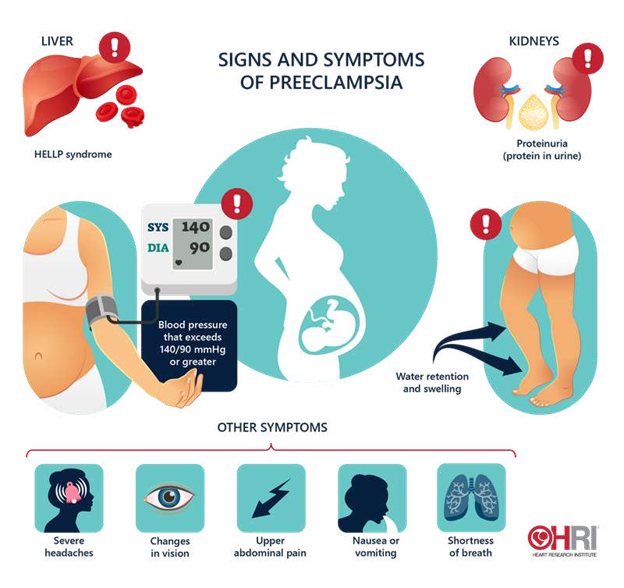A nurse is collecting data from a client who is at 29 weeks of gestation.
Which of the following findings should the nurse identify as a potential indication of a prenatal complication?
Leg cramps.
Ptyalism.
Blurred vision.
Melasma.
The Correct Answer is C
This can be a sign of preeclampsia, a serious complication of pregnancy that causes high blood pressure and proteinuria.

The nurse should report this finding to the provider and monitor the client’s blood pressure, urine protein, and reflexes.
Choice A is wrong because leg cramps are a common discomfort during pregnancy and are not usually a sign of a complication.
Choice B is wrong because ptyalism, or excessive salivation, is a normal physiological change during pregnancy and does not indicate a problem.
Choice D is wrong because melasma, or darkening of the skin on the face, is also a normal physiological change during pregnancy and does not pose a risk to the mother or the fetus.
Nursing Test Bank
Naxlex Comprehensive Predictor Exams
Related Questions
Correct Answer is A
Explanation
This is because lowering the bed reduces the risk of injury if the client falls out of the bed. It also makes it easier for the client to get in and out of the bed safely.
Choice B is wrong because wearing socks when ambulating can increase the risk of slipping and falling. The client should wear shoes or slippers with non-skid soles.
Choice C is wrong because positioning the client’s bedside table at the foot of the bed can create an obstacle for the client to walk around. The bedside table should be placed near the head of the bed and within reach of the client.
Choice D is wrong because raising four side rails on the client’s bed can be considered a form of restraint and can increase the risk of injury if the client tries to climb over them. The use of restraints should be avoided for clients with dementia, as they can cause agitation, confusion, and distress. Instead, other measures such as bed alarms, motion sensors, or frequent monitoring should be used to prevent falls.
Correct Answer is B
Explanation
Obturator.

An obturator is a device that is inserted into the tracheostomy tube to guide it through the stoma and prevent tissue damage. It should be removed after the tube is inserted and kept near the bedside in case of accidental decannulation.
Choice A is wrong because povidone-iodine is an antiseptic solution that is not routinely used for tracheostomy care. It can cause skin irritation and damage to the mucous membranes.
Choice C is wrong because an irrigation set is not needed for a tracheostomy tube.
Irrigation can introduce bacteria and increase the risk of infection. It can also cause coughing and bleeding.
Choice D is wrong because hemostats are not used for a tracheostomy tube.
Hemostats are surgical instruments that are used to clamp blood vessels or tissues. They have no role in tracheostomy care.
Some other supplies that the nurse should place in the room are a trach tube the same size as the current tube and one size smaller, a portable suction machine with battery backup, and tubing that connects to the suction machine. Other supplies may include saline solution, syringes, gauze squares, gloves, a trachea tube brush, a waterproof drape, non-woven sponges, pipe cleaners, cotton tipped applicators, a T-drain sponge, twill tape, a trach holder, a speaking valve, a stoma cover, and a nebulizer.
Whether you are a student looking to ace your exams or a practicing nurse seeking to enhance your expertise , our nursing education contents will empower you with the confidence and competence to make a difference in the lives of patients and become a respected leader in the healthcare field.
Visit Naxlex, invest in your future and unlock endless possibilities with our unparalleled nursing education contents today
Report Wrong Answer on the Current Question
Do you disagree with the answer? If yes, what is your expected answer? Explain.
Kindly be descriptive with the issue you are facing.
